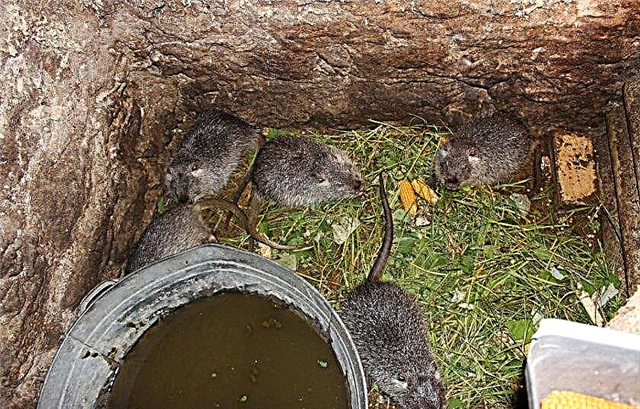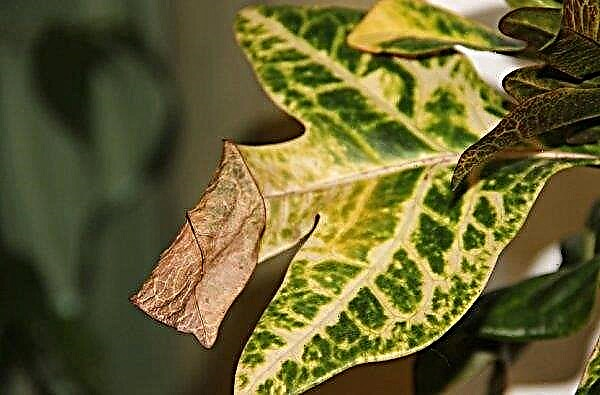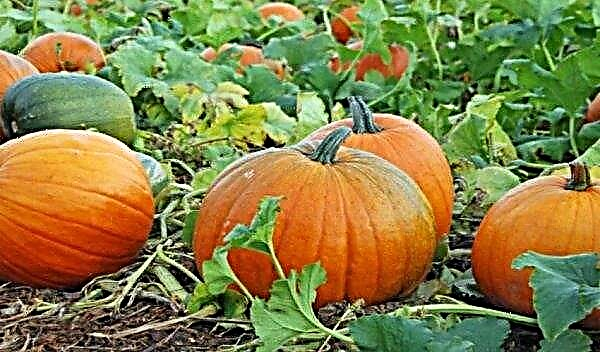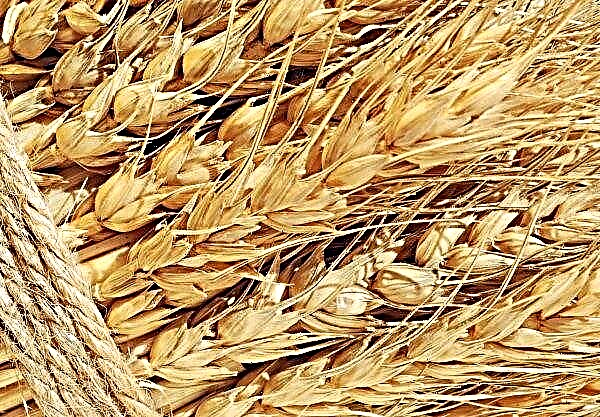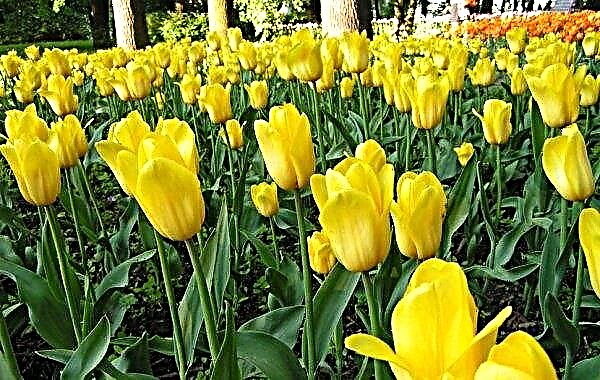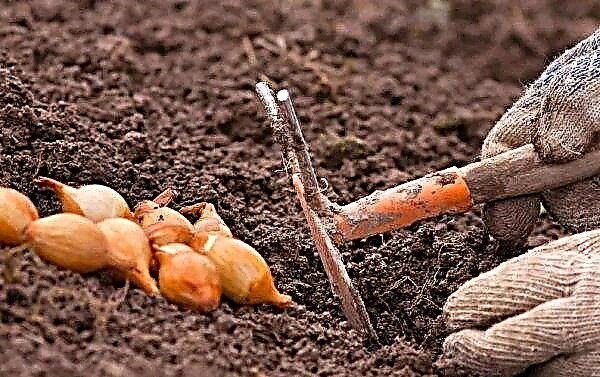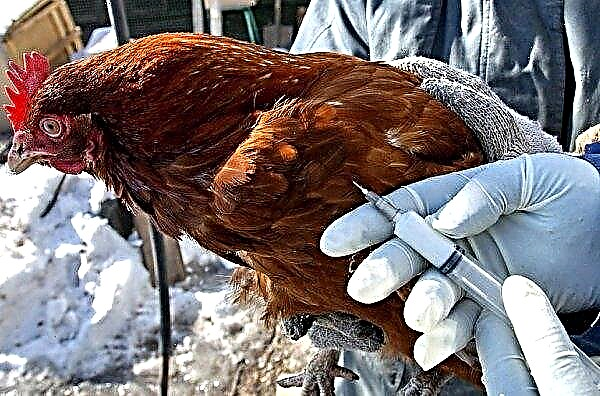Eggplant dishes often appear on the summer table of our compatriots, so gardeners often grow eggplant on household plots. In this article, we will consider how to properly and in what quantity need to be watered for this moisture-demanding crop.
Water selection for irrigation
Eggplant is a tropical plant, so you need to water it with warm, heated in the sun water. Eggplants do not like hard, calcareous water; the most acceptable option is soft rain water or water that has settled for a day. To collect rainwater, gardeners install metal and plastic 200-liter barrels at the drain.
Eggplant should not be watered with cold water, only warm. Water for irrigation can be poured into large metal barrels and heated in a day under the sun. The temperature of the water before irrigation can be checked using a thermometer, the temperature most acceptable for the eggplant will be in the range +25 ... + 27 ° C.
At the same time as water for irrigation, you can add fertilizer if the eggplants do not grow well: they have pale leaves, underdeveloped roots, a fragile and brittle stem. Among gardeners, a very popular water-soluble top dressing is ordinary ammonia. In a 10-liter watering tank with water, add 3 tablespoons of ammonia, mix, and pour into the root zone of the eggplant.
In a 10-liter watering tank with water, add 3 tablespoons of ammonia, mix, and pour into the root zone of the eggplant.
Important! Drops of moisture on the leaves at sultry noon work like magnifying lenses - they concentrate the sun's rays under the drop, thereby causing a burn. Damaged plant tissue is open to pathogenic bacteria and fungi.
How much and how often to water the eggplant
Eggplant is a very moisture-loving plant, and therefore requires good irrigation. Irrigation work is carried out every two to three days. In hot weather, it is watered abundantly, so that the water soaks the soil 10 cm deep.
Frequent watering with a small amount of water leads to the formation of surface roots in plants that get used to drawing moisture near the surface of the soil. In addition, with scanty irrigation, most of the water settles on the surface of the plants and evaporates, this moisture is simply lost.
Watering Methods
You can moisten the soil under plants in several ways: manually, using a garden hose or drip irrigation tapes.
Manual
This method is acceptable for small beds, plants are watered with a bucket and bucket or a manual garden watering can. Usually, no more than 10 l is placed in each water tank, just as much as the gardener can easily attribute to the desired garden bed. 10 liter capacity is enough to moisten 1 m² of beds. The manual method of moistening the soil under the eggplant is convenient in that, if necessary, it can be combined with top dressing. To do this, add concentrated feeding of poultry manure, mullein or ammonia to the water, diluted to the desired consistency.
10 liter capacity is enough to moisten 1 m² of beds. The manual method of moistening the soil under the eggplant is convenient in that, if necessary, it can be combined with top dressing. To do this, add concentrated feeding of poultry manure, mullein or ammonia to the water, diluted to the desired consistency.
The disadvantages of the manual method of hydration are the complexity and duration of the process.
Important! When growing vegetables in small areas, it is advisable to close the space between the rows so that there is no open soil. Such an agricultural technique is called mulching; for this purpose, crushed bark, wood sawdust or agrofibre (spunbond) can be used.
With a hose
A garden hose greatly facilitates the hydration of the root layer of eggplant, provided that there is a water column nearby and the hose is long enough to stretch it to the desired bed. When watering from a hose:
When watering from a hose:
- it is undesirable to use water from an artesian well, since it is too cold and can contribute to the occurrence of fungal diseases;
- you can not use too much water pressure, this can damage the leaves of eggplant;
- it is recommended to put a fine spray diffuser on the watering end of the hose (as in the shower);
- you need to direct a stream of water not on the greenery of the bushes, but in the aisle and in the root zone of plants.
In order not to damage the extreme plants while moving a heavy hose along the paths of the garden, experienced gardeners recommend digging glass bottles (down the neck) into the ends of the beds.
Such hose stops will serve the gardener throughout the summer season. In the autumn they are collected, washed and stored for storage until the next garden season.
Drip
The most successful irrigation option is drip irrigation. In modern stores for the garden, there are always on sale drip irrigation tapes of various sections. Drip irrigation tapes for growing different crops differ in the cross section of the water hole and the distance between the watering holes.
For example, for strawberries, water holes will be located at a distance of 20–25 cm from each other, and in the “drop” tapes for potatoes - at a distance of 40 or 50 cm. In addition to water holes, the drip irrigation tape is equipped with a special system for stabilizing water flow. Thanks to her, drops of moisture will flow to the roots of the plant with the same frequency and in the same quantity, both at the beginning of the tape and at the very end.
Thanks to her, drops of moisture will flow to the roots of the plant with the same frequency and in the same quantity, both at the beginning of the tape and at the very end.
Tape drip system is inexpensive, in addition, if you use it with care and assemble the system for the winter for storage under the roof, will serve the owner from 4 to 5 seasons. In addition to the tape itself, to collect the irrigation system, the gardener will need to purchase special clamps and taps made of plastic.
The mounted system is connected to a central water tap.
Did you know? The health benefits of eating eggplant include: strengthening bones, preventing osteoporosis, reducing symptoms of anemia, as well as improving the functioning of the cardiovascular system and a beneficial effect on the digestive system. Eggplants are also good for weight loss, stress reduction and even preventing the onset of cancer.
Many gardeners are not sure whether drip irrigation can be arranged in the garden if there is no water supply nearby. This is quite possible if the water tank (metal barrel, tank) is raised to a height of at least 1 m, and a drip system is connected to it.
The drip irrigation tape is laid out in the beds so that it is between two rows of plants, water, dripping from the holes, gradually moistens the soil to 50 cm in diameter, to a depth of 30 cm.
This is the most economical way to consume water. Using drip irrigation, liquid mineral fertilizers can be added along with water under the root of plants.
The amount of water when watering
For each adult eggplant plant, it is necessary to add from 1.5 to 2 liters of water, or 10-12 liters per 1 m². Regardless of the growth phase of the eggplant, it is not necessary to reduce the amount of water introduced under each plant, but if necessary, the frequency of applying moisture to the soil can be reduced.
Regardless of the growth phase of the eggplant, it is not necessary to reduce the amount of water introduced under each plant, but if necessary, the frequency of applying moisture to the soil can be reduced.
Did you know? Eggplants are a good source of dietary fiber, vitamin B1 and B6, vitamin K, copper, manganese, niacin, potassium, folic acid, and they also contain phytonutrients such as nasunin and chlorogenic acid.
Schedule of irrigation during the vegetation stages
At different stages of cultivation, eggplants require different frequency of watering, since depending on age, the need for moisture changes in plants. Young seedlings are rarely and sparse watered; a flowering and fruiting bush is often plentiful.
First shoots
After the first shoots, eggplant is watered as little as possible. This period is complicated by the possibility of the appearance of the most dangerous for the family of solanaceous diseases - the black leg. The development of this disease contributes to wet soil, the black leg can "mow" all seedlings in a day.
Therefore, in the period from the appearance of the first sprouts to the development of two real leaves on seedlings:
- irrigation is carried out in the rows of seedlings, under the root;
- watered so that the leaves and stems remain dry;
- watering should be moderate, in no case should the earth be flooded to a state of dirt;
- in the interval between irrigation, the topsoil in the seedling box (greenhouse) dries slightly, but the seedlings do not fade from dehydration;
- To reduce the need for watering, the seedling box is covered with plastic wrap or transparent glass, opening the resulting mini-greenhouse twice a day for ventilation.
 Gentle seedlings should not be watered using a strong pressure of water, as this can lead to damage to the stems and leaves, which in the future will lead to a decrease in yield. Torn tissues are often a source of fungal infection.
Gentle seedlings should not be watered using a strong pressure of water, as this can lead to damage to the stems and leaves, which in the future will lead to a decrease in yield. Torn tissues are often a source of fungal infection.It is worth buying a watering can and watering the young seedlings with a gentle light shower. This will be much more time-consuming, but the plants will be healthy, and in the future they will bloom profusely.
After landing
After planting adult seedlings in a bed (at a constant place), the soil in the root zone should remain moist until the plants are fully surviving. Therefore, gardeners regularly conduct soil hydration as the soil dries in the root zone.
Irrigation in this mode is maintained until the eggplant survives completely. It is possible to determine that a young plant has taken root by building up new stems and leaves on the bushes.
Important! There is a method for growing eggplant in a field without watering. To do this, during the planting of eggplants in the garden, abundant water-loading irrigation, at least 1 liter under the plant, is carried out in each planting hole.
During flowering
Planted in a permanent place, young bushes of eggplant in no case watered over the leaf, but only moisturize their basal zone. Water for irrigation should be slightly warm, since cold water can cause temperature shock, and, as a result, showers of ovary and flowers.
The most acceptable water temperature is close to the temperature of the soil in the bed. When the plantings bloom, the plants need to be irrigated about once every three days. In the heat, watering is carried out daily, pouring up to about 2 liters of water under each bush.
When the plantings bloom, the plants need to be irrigated about once every three days. In the heat, watering is carried out daily, pouring up to about 2 liters of water under each bush.
In the period of formation and growth
In July, the soil under vegetables is moistened as before, about twice a week. At the beginning of the month, plant formation is completed, part of the flowering branches begins to form ovaries.
Irrigation should be continued until the end of summer (July, August). In August, gardeners partially reduce the frequency of watering eggplant to once a week.
When the plants bloom and bear fruit, they continue to feed them, for this they use top dressing on chicken manure, mullein, ammonia or nettle. If this is not done, the actively bearing plant is rapidly depleted, and further productivity is reduced.
Did you know? Eggplants are very much in demand in the cuisine of the Mediterranean region. Classical dishes such as Greek Moussaka, Italian eggplant Parmigiana or stew are prepared from them. This vegetable is often baked, fried or stewed, and then used as a side dish or main course.
Features of watering
Eggplants growing in open ground and in a polycarbonate (film) greenhouse have different moisture requirements. This is due to the fact that some vegetable plantations have a roof, others do not, which means that they are open to natural rainfall. But in addition to differences, there are general requirements for watering plants. How to properly and effectively pour adult eggplant:
How to properly and effectively pour adult eggplant:
- It is necessary to avoid watering on sunny days during the daytime, when the highest evaporation occurs, and there is a risk of burning plants with sunlight. The best time for watering is in the early morning, when it is still not too hot, and in a few hours the eggplant leaves that are wet after irrigation will quickly dry out, which will reduce the risk of fungal diseases.
- It is advisable, as far as possible, not to moisten the leaves of plants when watering. This applies to all crops susceptible to fungal diseases, such as tomatoes, cucumbers, strawberries or bulb flowers. When growing these plants, instead of sprinkling, radical root irrigation or a drip irrigation system is used, which distributes water directly to the soil.
To reduce the need for watering:
- eggplant is cultivated on the most suitable substrates for them (on light, sandy and loose soils), this will give the plants drought tolerance;
- organic ingredients (compost and manure) are added to the ground, which increase soil absorption and retain moisture for a long time;
- mulch the aisles, thereby reducing the evaporation of water from the soil.
Outdoor watering
The frequency of irrigation for eggplant grown in the open is regulated, depending on the rainfall. The more frequent and more abundant it is, the less often you need to water vegetables.
In the absence of rain, the frequency and abundance of irrigation on street beds remains the same (2 liters per plant twice a week).
Watering in the greenhouse
Growing in a greenhouse implies high humidity, which is dangerous for the health of eggplants. Therefore, irrigation in greenhouses is carried out only in the evening or in the morning, using the drip irrigation method. Periodically, drip irrigation is combined with fertilizing greenhouse eggplants with nitrogen and potassium fertilizers.
Water for moistening the greenhouse is used only warm. To reduce air humidity, the frequency of greenhouse irrigation is reduced by mulching the beds, which prevents moisture from evaporating.
Eggplant - a plant that is generous to the crop, but very demanding on the level of moisture in the soil. The vegetable grower will get a good crop only if the beds with eggplant are sufficiently watered on time and enough.




